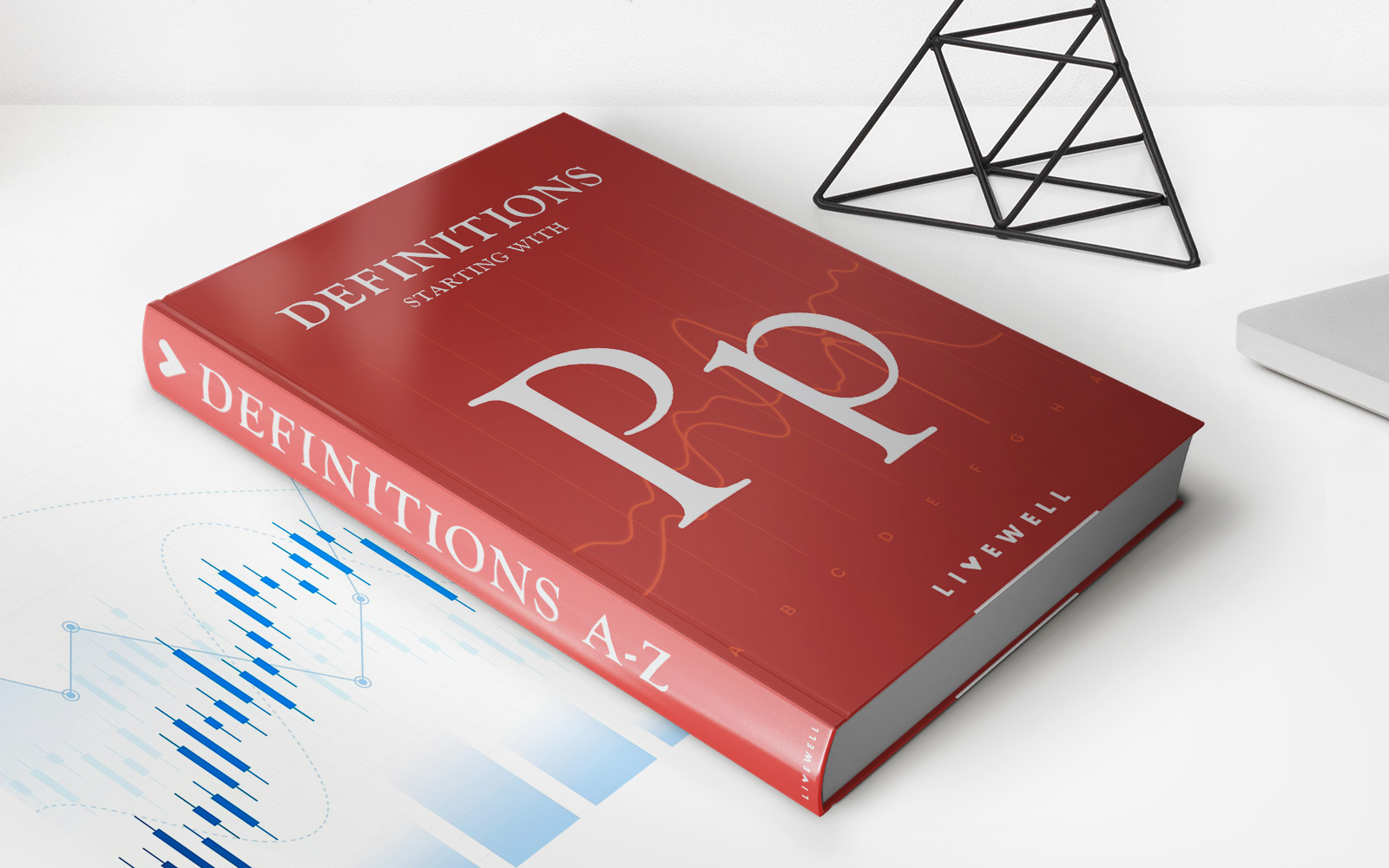Home>Finance>How Can Insurance Help With Meeting Savings Goals?


Finance
How Can Insurance Help With Meeting Savings Goals?
Published: November 16, 2023
Discover how insurance can support your finance goals and help you meet your savings targets. Explore the benefits of insurance for financial planning now!
(Many of the links in this article redirect to a specific reviewed product. Your purchase of these products through affiliate links helps to generate commission for LiveWell, at no extra cost. Learn more)
Table of Contents
- Introduction
- Understanding the Importance of Saving
- Challenges in Meeting Savings Goals
- Role of Insurance in Meeting Savings Goals
- Types of Insurance That Can Help with Savings Goals
- Life Insurance
- Health Insurance
- Property Insurance
- Vehicle Insurance
- Retirement Plans
- Tips for Maximizing Insurance Benefits for Savings Goals
- Conclusion
Introduction
In today’s fast-paced world, financial security and meeting savings goals have become top priorities for individuals and families. Whether it’s saving for a down payment on a house, funding a child’s education, or building a retirement nest egg, the benefits of saving are undeniable. However, achieving these goals can be challenging due to various factors such as unexpected expenses, market fluctuations, and the temptation to spend frivolously.
Fortunately, insurance can play a crucial role in helping individuals and families navigate these challenges and effectively meet their savings goals. While insurance is primarily associated with providing protection against risks and unforeseen events, it also offers numerous benefits that can contribute to long-term financial stability.
In this article, we will explore the various ways in which insurance can help individuals and families meet their savings goals. We will examine the types of insurance that provide direct financial benefits, as well as strategies to maximize these benefits.
From ensuring financial protection to providing investment opportunities, insurance offers a unique combination of features that can leverage the savings potential of individuals and families. By understanding how insurance works in tandem with savings goals, individuals can make informed decisions to secure their financial future.
Now, let’s delve deeper into the importance of saving and the challenges that can hinder the achievement of savings goals.
Understanding the Importance of Saving
Saving money is a fundamental aspect of personal finance that should not be underestimated. It is the practice of setting aside a portion of one’s income for future use, providing a financial safety net and enabling the pursuit of long-term goals. Understanding the importance of saving is crucial for individuals to achieve financial stability and security.
One of the primary reasons saving is important is the ability to handle unexpected expenses or emergencies. Life is full of uncertainties, and having savings can act as a buffer in times of crisis. Whether it’s an unexpected medical expense or a sudden job loss, having a financial cushion can alleviate stress and provide peace of mind.
Saving also allows individuals to achieve their long-term goals. Whether it’s purchasing a home, starting a business, or retiring comfortably, saving is the key to realizing these aspirations. By consistently setting aside money and allowing it to grow over time, individuals can accumulate the necessary funds to achieve their dreams.
Additionally, saving promotes financial independence. It empowers individuals to have control over their financial future and reduces dependence on loans and credit cards. By saving money, individuals can avoid unnecessary debt and the associated interest payments, leading to greater financial freedom.
Moreover, saving plays a vital role in building wealth. Through the power of compounding, the money saved can generate interest, dividends, or capital gains over time. This can significantly accelerate wealth accumulation and create opportunities for investments and additional income streams.
Lastly, saving provides a sense of financial security and peace of mind. Knowing that there are savings to fall back on in times of need brings a sense of stability and reduces financial stress. It can also improve overall well-being and positively impact mental and emotional health.
Ultimately, understanding the importance of saving sets the foundation for prudent financial management. It enables individuals to plan for the future, navigate unexpected events, and achieve their financial goals. However, saving alone may not be enough to overcome all financial challenges, which is where insurance comes into play.
Challenges in Meeting Savings Goals
While saving money is a worthwhile endeavor, there are numerous challenges that individuals face when trying to meet their savings goals. These challenges can often create roadblocks and hinder the progress towards financial security.
One of the primary challenges is the temptation to spend. In today’s consumer-driven society, there is a constant allure of buying new gadgets, going on luxurious vacations, and indulging in lifestyle enhancements. This cultural pressure to spend can make it difficult for individuals to prioritize saving over immediate gratification.
Another challenge is the lack of financial discipline and budgeting skills. Many individuals find it challenging to adhere to a strict savings plan or maintain a consistent saving habit. Without proper budgeting, it’s easy to overspend and neglect saving for the future.
Additionally, individuals often face unexpected expenses that can divert funds away from savings. Whether it’s a car repair, medical bills, or home maintenance, these unforeseen expenses can significantly impact the ability to save. Without a financial safety net, individuals may be forced to dip into their savings or rely on credit, further hindering progress towards their savings goals.
Furthermore, stagnant incomes and rising expenses can make it difficult to save. In an era of inflation and increasing costs, individuals may struggle to allocate a significant portion of their income towards savings. Limited disposable income can lead to a constant cycle of living paycheck to paycheck, leaving little room for savings.
Lastly, lack of financial education and awareness can also pose challenges. Many individuals may not fully understand the benefits and importance of saving. Without the necessary knowledge and guidance, they may not know how to effectively allocate their savings or take advantage of investment opportunities.
While these challenges may seem daunting, it’s crucial to recognize them and develop strategies to overcome them. With the right mindset, financial discipline, and access to the right tools, individuals can successfully navigate these hurdles and make progress towards their savings goals. One such tool that can assist in overcoming these challenges is insurance.
Role of Insurance in Meeting Savings Goals
Insurance serves as a valuable tool in helping individuals and families meet their savings goals by providing financial protection and avenues for growth. While insurance is commonly associated with risk management, it also offers several benefits that can contribute to long-term financial stability and aiding savings endeavors.
First and foremost, insurance provides a safety net against unforeseen events and risks. By having adequate insurance coverage, individuals can protect their savings from being depleted due to unexpected expenses or emergencies. For example, auto insurance can cover the cost of repairs or replacement in case of an accident, saving the individual from having to dip into their savings. This protection allows individuals to allocate more of their income towards saving and investment instead of constantly worrying about potential financial setbacks.
Furthermore, certain types of insurance, such as life insurance and health insurance, offer cash value components or investment options. These policies accumulate value over time, providing an opportunity to grow savings. Policyholders can access the accumulated cash value or borrow against it to meet financial goals or handle unexpected expenses. This feature can be particularly beneficial for individuals who may not have the discipline to save consistently but still want to build financial security.
In addition, insurance can offer tax advantages that can further aid in meeting savings goals. For instance, contributions to retirement plans such as 401(k) or Individual Retirement Accounts (IRAs) are often tax-deductible, allowing individuals to reduce their taxable income and potentially save more money. This tax efficiency can help individuals maximize their savings potential and fast-track their progress toward retirement goals.
Moreover, insurance can provide opportunities for wealth accumulation and growth through investment-linked products. These types of insurance policies, commonly known as variable life insurance or unit-linked insurance plans, allow policyholders to invest in a variety of asset classes such as stocks, bonds, or mutual funds. The returns from these investments can contribute to savings and offer the potential for significant growth over time.
Overall, insurance plays a crucial role in meeting savings goals by providing financial protection, investment opportunities, and tax advantages. It allows individuals to safeguard their savings from unexpected events while simultaneously providing avenues for growth and wealth accumulation. Awareness of the different types of insurance and their benefits can help individuals leverage these tools effectively to maximize their savings potential.
Types of Insurance That Can Help with Savings Goals
Several types of insurance can play a significant role in helping individuals and families meet their savings goals. These insurance policies provide various benefits and features that can support long-term financial stability and aid in wealth accumulation.
1. Life Insurance: Life insurance is designed to provide financial protection to loved ones in the event of the policyholder’s death. However, certain types of life insurance, such as whole life or universal life, also offer a cash value component that accumulates over time. The policyholder can access this cash value through withdrawals or policy loans, providing an opportunity to supplement savings or meet financial goals.
2. Health Insurance: Health insurance is essential for protecting against the potentially high costs of medical treatments and hospitalization. By having health insurance, individuals can avoid significant out-of-pocket expenses that could otherwise deplete their savings. Additionally, some health insurance policies offer health savings accounts (HSAs) or flexible spending accounts (FSAs), which allow individuals to save pre-tax dollars specifically for medical expenses.
3. Property Insurance: Property insurance, such as homeowners or renters insurance, ensures financial protection for one’s property against risks like theft, natural disasters, or accidents. By having adequate property insurance coverage, individuals can safeguard their belongings and avoid incurring significant costs for repairs or replacements. This protection frees up funds that can be allocated towards savings rather than emergency expenses.
4. Vehicle Insurance: Vehicle insurance is essential for protecting against financial losses related to vehicle accidents, damages, or theft. It covers the costs of repairs or replacement of the insured vehicle, reducing the financial burden on the policyholder. By having vehicle insurance, individuals can avoid depleting their savings to cover unexpected vehicular expenses.
5. Retirement Plans: Retirement plans, such as 401(k)s and IRAs, offer a tax-advantaged way to save for retirement. Contributions to these plans are often tax-deductible, allowing individuals to reduce their taxable income and potentially save more money for retirement. The growth of investments within these retirement accounts is tax-deferred, further enhancing savings potential.
6. Annuities: Annuities are insurance contracts that provide a stream of income during retirement. They can be structured to pay out over a specified period or for the remainder of an individual’s life. Annuities offer individuals a way to save for retirement while also ensuring a steady income flow in their post-retirement years.
It is essential to review and assess the specific features and benefits of each insurance type to determine which aligns with individual savings goals and financial needs. Consulting with an insurance professional or financial advisor can help individuals make informed decisions about the types and amounts of insurance coverage that will best support their savings goals.
Life Insurance
Life insurance is a type of insurance policy that provides financial protection for loved ones in the event of the policyholder’s death. While the primary purpose of life insurance is to provide a death benefit, certain types of life insurance also offer features that can help individuals with their savings goals.
There are two main types of life insurance: term life insurance and permanent life insurance. Term life insurance provides coverage for a specific term, typically 10, 20, or 30 years. It offers a death benefit to beneficiaries if the policyholder passes away during the specified term. Term life insurance is often more affordable than permanent life insurance and is suitable for individuals who need coverage for a specific period, such as until their mortgage is paid off or until their children are financially independent.
Permanent life insurance, on the other hand, provides coverage for the policyholder’s entire life, as long as the premiums are paid. Unlike term life insurance, permanent life insurance includes a cash value component that accumulates over time. This cash value grows tax-deferred and can be accessed through policy withdrawals or loans. Policyholders can use this cash value to supplement their savings, fund education expenses, or meet other financial goals.
There are different types of permanent life insurance, including whole life insurance, universal life insurance, and variable life insurance. Whole life insurance offers a guaranteed death benefit, level premiums, and a fixed cash value component. Universal life insurance offers more flexibility in terms of premium payments and death benefits. Variable life insurance allows policyholders to invest in underlying investment options, potentially earning higher returns but also subject to market fluctuations.
With permanent life insurance policies, the premiums paid may be higher than term life insurance. However, they offer the potential for cash value growth and access to funds that can support savings goals. Policyholders can choose to withdraw cash value, take out policy loans, or use it as collateral to secure loans.
It’s important to note that accessing the cash value of a permanent life insurance policy will reduce the death benefit and could potentially have tax implications. Before making any decisions regarding life insurance and its impact on savings goals, individuals should carefully consider their financial situation and consult with a financial advisor or insurance professional.
Health Insurance
Health insurance is a vital form of coverage that helps individuals manage the costs of medical treatments and healthcare services. While the main purpose of health insurance is to provide financial protection against medical expenses, it can also indirectly support individuals in meeting their savings goals.
One of the primary benefits of health insurance is the coverage it provides for medical expenses. Without health insurance, individuals could face astronomical healthcare costs, especially for unexpected medical emergencies or long-term treatments. By having health insurance, individuals can access necessary medical care without depleting their savings or going into debt.
Moreover, some health insurance plans offer additional savings options that can aid individuals’ financial goals. Health savings accounts (HSAs) and flexible spending accounts (FSAs) are two common types of accounts associated with health insurance coverage. Both of these accounts allow individuals to set aside pre-tax dollars to be used for qualified medical expenses.
HSAs are available to individuals enrolled in high-deductible health insurance plans. Contributions to an HSA can be deducted from taxable income, and the funds can grow tax-free. The accumulated balance in an HSA can be carried forward year after year, allowing individuals to build a significant savings pool that can be used for medical expenses in the future.
FSAs, on the other hand, are generally offered through employer-sponsored health insurance plans. Similar to HSAs, contributions to an FSA are made on a pre-tax basis. However, FSAs operate on a “use-it-or-lose-it” basis, meaning that any funds not used within the plan year are forfeited. Nevertheless, FSAs can still provide immediate savings by reducing taxable income and allowing individuals to pay for medical expenses with pre-tax dollars.
By taking advantage of HSAs or FSAs, individuals can effectively reduce their taxable income, potentially increasing their overall savings capacity. The funds saved through these accounts can be used not only for immediate medical expenses but also to build a financial cushion or contribute to long-term savings goals.
Beyond the savings options, health insurance itself plays a vital role in protecting individuals’ financial well-being. It helps guard against unexpected medical expenses that could otherwise deplete savings or lead to substantial debt. By maintaining proper health insurance coverage, individuals can focus on their savings goals with peace of mind, knowing that their health-related financial risks are mitigated.
It’s important for individuals to carefully review and understand the details and benefits of their health insurance plans. They should be aware of the savings options available, such as HSAs or FSAs, and take advantage of them to optimize their financial situation and support their overall savings goals.
Property Insurance
Property insurance is a crucial form of coverage designed to protect individuals from financial losses related to their property. Whether it’s a home, rental property, or valuable possessions, property insurance safeguards against risks such as theft, damages, or natural disasters. While the main purpose of property insurance is to provide protection, it can indirectly support individuals in meeting their savings goals as well.
One of the primary benefits of property insurance is the financial protection it provides for your assets. In the event of a covered loss, such as a fire or vandalism, property insurance covers the cost of repairs or replacement. This means that instead of having to dip into savings or take out loans to cover unexpected expenses, individuals can rely on their property insurance to mitigate the financial burden.
Furthermore, property insurance can indirectly support savings goals by mitigating risks associated with property ownership. Without insurance, property owners are exposed to significant financial risks. For example, if a natural disaster or accident were to damage or destroy a home, the cost of repairs or rebuilding could be substantial and jeopardize an individual’s savings. Property insurance provides a safety net that preserves savings and allows individuals to maintain their financial stability even in challenging circumstances.
In addition to the coverage for the structure of the property, property insurance also extends to personal belongings. This can be especially valuable for individuals with valuable assets, such as jewelry, electronics, or artwork. If these items are damaged, lost, or stolen, the insurance coverage can help replace or repair them without the need to deplete savings.
Moreover, property insurance is often a requirement for securing a mortgage. Lenders typically mandate insurance coverage to protect their investment. By having property insurance, individuals can secure favorable mortgage terms, including lower interest rates, which can save money over the life of the loan. In turn, these cost savings can be directed towards savings goals, such as building an emergency fund or investing for the future.
By protecting against unforeseen events and the associated financial losses, property insurance provides individuals with peace of mind to focus on their savings goals. It ensures that unexpected expenses related to property are covered, freeing up funds that can be allocated towards savings or other financial objectives.
It is essential to carefully review and understand the details and coverage of your property insurance policy. By working closely with insurance professionals and regularly updating your coverage to reflect changes in property value, individuals can ensure they have the appropriate level of protection to support their savings goals.
Vehicle Insurance
Vehicle insurance is a critical form of coverage that provides financial protection against losses associated with owning and operating a vehicle. While the primary purpose of vehicle insurance is to cover damages, theft, or accidents, it can also play a role in supporting individuals’ savings goals.
One of the main benefits of vehicle insurance is the coverage it provides for unexpected expenses related to accidents or damages. Without insurance, individuals would have to bear the full financial burden of repairing or replacing their vehicles. Vehicle insurance steps in to cover these costs, reducing the impact on an individual’s savings. By having insurance, individuals can drive with peace of mind, knowing that they are protected financially in case of an accident or theft.
Moreover, vehicle insurance indirectly supports savings goals by providing liability coverage. This coverage protects individuals from legal and financial responsibilities if they are at fault in an accident that causes damage to someone else’s property or injuries to other individuals. Without liability coverage, individuals could face significant costs, including legal fees and potential settlements. Vehicle insurance ensures that these expenses do not impact an individual’s savings, maintaining their financial stability.
Additionally, some vehicle insurance policies offer additional benefits that can support savings goals. For example, certain policies may offer roadside assistance coverage, which can save individuals money by providing services such as towing, jump-starts, or unlocking their vehicles. By having this coverage, individuals can avoid costly service calls or memberships to roadside assistance programs.
Furthermore, having vehicle insurance is often a requirement for securing a car loan. Lenders typically mandate comprehensive and collision coverage to protect their investment. By having vehicle insurance, individuals can fulfill this requirement and secure favorable loan terms, such as lower interest rates. These cost savings can then be directed towards other savings goals, such as an emergency fund or future investments.
Lastly, maintaining continuous vehicle insurance can contribute to a positive driving record. Insurance companies take into account a driver’s history of coverage when determining premiums. By consistently maintaining vehicle insurance, individuals can potentially qualify for lower insurance rates in the future. These savings on insurance premiums can then be redirected towards other financial goals.
Vehicle insurance provides essential financial protection and peace of mind for drivers. It not only covers unexpected expenses but also indirectly supports individuals’ savings goals by mitigating financial risks and offering additional benefits. By carefully selecting the appropriate coverage and maintaining continuous insurance, individuals can ensure they have the necessary protection and potential savings to support their financial objectives.
Retirement Plans
Retirement plans are a crucial component of a comprehensive savings strategy, providing individuals with the means to accumulate funds and secure their financial future. Retirement plans offer various benefits that can support individuals in meeting their savings goals and ensuring a comfortable retirement.
One of the primary advantages of retirement plans is the ability to save for retirement on a tax-advantaged basis. Contributions made to retirement plans, such as 401(k)s or Individual Retirement Accounts (IRAs), are often tax-deductible. This means that individuals can reduce their taxable income in the year of contribution, potentially saving money on their annual tax bill. The tax savings can then be redirected towards increasing overall savings or invested to grow wealth.
Another benefit of retirement plans is the potential for employer matching contributions. Many employers offer matching contributions to employees’ retirement plans, up to a certain percentage of their salary. This is essentially free money that individuals can receive by participating in the retirement plan. Taking advantage of employer matching contributions can significantly boost an individual’s retirement savings and accelerate progress toward retirement goals.
Retirement plans also offer a range of investment options. Individuals can choose how to allocate their retirement savings among various asset classes such as stocks, bonds, and mutual funds. The growth of these investments within the retirement account is typically tax-deferred, meaning that any earnings or capital gains are not subject to immediate taxation. This tax efficiency allows individuals to maximize their savings potential by allowing their investments to compound over time.
Furthermore, retirement plans often provide individuals with the ability to automate savings. Through payroll deductions, contributions to retirement plans are deducted directly from an individual’s salary before it is even received. This automation helps in building savings consistently and ensures that individuals do not inadvertently neglect saving for retirement.
Retirement plans also provide individuals with the flexibility to access their savings under certain circumstances. While the primary purpose of retirement savings is for retirement income, some plans allow for penalty-free withdrawals in cases of hardships or specific life events. This flexibility can provide individuals with a safety net in times of financial need while still encouraging long-term savings discipline.
It is essential to identify and evaluate the types of retirement plans available, as well as the specific rules and regulations associated with each. By understanding the features and benefits of retirement plans, individuals can make informed decisions about contributing to their retirement savings, optimizing their savings potential, and working toward a secure financial future.
Tips for Maximizing Insurance Benefits for Savings Goals
While insurance plays a critical role in supporting savings goals, there are several strategies individuals can employ to maximize the benefits and leverage insurance effectively. By implementing these tips, individuals can optimize their savings potential and achieve greater financial security.
1. Assess your insurance needs regularly: Regularly review your insurance coverage to ensure it aligns with your current financial situation and goals. As life circumstances change, such as getting married, having children, or purchasing a home, adjusting your insurance coverage accordingly can ensure you have adequate protection and avoid paying for unnecessary coverage.
2. Shop around for the best rates: Insurance premiums can vary significantly among different providers. Take the time to compare rates from multiple insurance companies to ensure you are getting the best value for your coverage. Consider working with an independent insurance agent who can help you navigate the options and find the most cost-effective solutions.
3. Bundle your policies: Many insurance companies offer discounts for bundling multiple types of insurance, such as home and auto insurance. By consolidating your policies with one insurer, you can often save money on premiums and simplify your insurance management.
4. Maintain a good credit score: Your credit score can impact your insurance premiums. Maintaining a good credit score demonstrates financial responsibility, which insurers view positively. By paying bills on time, keeping credit card balances low, and managing your credit wisely, you can potentially qualify for lower insurance premiums.
5. Take advantage of discounts: Insurance companies often offer various discounts that can help reduce premiums. These may include discounts for safety features in your home or vehicle, maintaining a clean driving record, or taking defensive driving courses. Inquire with your insurance provider about available discounts and take advantage of them to save money.
6. Consider increasing deductibles: If you have the financial means to cover higher deductibles in the event of a claim, raising your deductibles can result in lower insurance premiums. However, it is crucial to have enough savings to cover the deductible amount should an incident occur.
7. Regularly review and update your beneficiaries: For life insurance policies or retirement accounts, ensure that your designated beneficiaries are up to date. Life events such as marriage, divorce, or the birth of a child can impact who should receive the proceeds of your insurance policies or retirement savings. Regularly reviewing and updating your beneficiary designations ensures that your savings go to the intended recipients.
8. Seek professional advice: When it comes to insurance and financial planning, seeking guidance from a qualified professional can provide valuable insights and ensure you are making informed decisions. An insurance agent or financial advisor can assess your specific needs, recommend appropriate coverage, and help you align your insurance policies with your savings goals.
By implementing these tips, individuals can maximize the benefits of insurance and optimize their savings potential. As with any financial decision, careful consideration and periodic review are essential to ensure that insurance coverage aligns with personal circumstances and goals.
Conclusion
In conclusion, insurance plays a significant role in helping individuals and families meet their savings goals. By understanding the importance of saving and recognizing the challenges that can hinder progress, individuals can leverage various types of insurance to support their financial objectives.
Insurance provides a safety net against unexpected events and risks, protecting individuals’ savings from being depleted due to unforeseen expenses. Whether it’s property insurance, vehicle insurance, or health insurance, coverage for potential losses helps individuals maintain their financial stability and focus on long-term savings goals.
Moreover, certain types of insurance, such as life insurance and retirement plans, offer additional benefits that can directly impact savings. Cash value components in life insurance policies provide an opportunity to access accumulated funds for supplemental savings or to meet financial goals. Retirement plans offer tax advantages, employer contributions, and investment options that can significantly propel individuals towards their retirement savings objectives.
To maximize the benefits of insurance for savings goals, individuals should regularly assess their insurance needs, shop around for competitive rates, and take advantage of available discounts. Bundling policies, maintaining a good credit score, and reviewing and updating beneficiaries are also essential steps to ensure proper protection and align coverage with personal circumstances.
By integrating insurance into their overall financial strategy, individuals can establish a strong foundation for long-term financial stability and security. Whether as a safety net for unexpected expenses or as a means to accumulate wealth, insurance provides individuals with the necessary tools to achieve their savings objectives and build a solid financial future.
It is important to note that while insurance can be a valuable tool, it should not be the sole focus of a savings strategy. Individuals should also consider diversifying their investments, setting clear financial goals, and regularly reviewing and adjusting their savings plan to align with changing circumstances.
In the end, a well-rounded approach to savings that incorporates insurance, proper financial planning, and disciplined saving habits will pave the way for individuals to accomplish their financial goals and create a secure and prosperous future.














